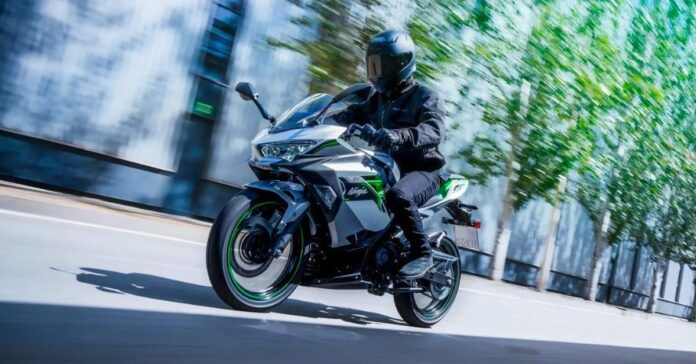Legacy motorcycle brands are taking bold steps into the electric future, but not all attempts have hit the mark. Can-Am and Kawasaki, both respected for their performance and unique legacies in the gasoline-powered world, have since entered the commuter e-motorcycle market with varying degrees of success, to put it kindly. But now with storied motorcycle brand Royal Enfield set to join the e-motorcycle market, can the much adored brand finally succeed where others have failed?
Can-Am and Pulse aren’t the only legacy motorcycle makers to bravely enter the e-motorcycle market with underwhelming designs, but they’re two very recent examples that highlight the biggest hurdles to existing motorcycle companies attempting to leverage their brand names in a market where the benefits of that lineage don’t always directly apply.
Can-Am’s Pulse comes with a hefty price tag of $14,000 and a relatively modest range, while Kawasaki’s electric Ninja and Z e-1 models are more affordable at around $7,500 but come severely underpowered and with pitifully short range, leaving many to question their appeal.
With Royal Enfield teasing an upcoming commuter e-motorcycle launch soon, could the company find the balance that others have struggled to achieve?
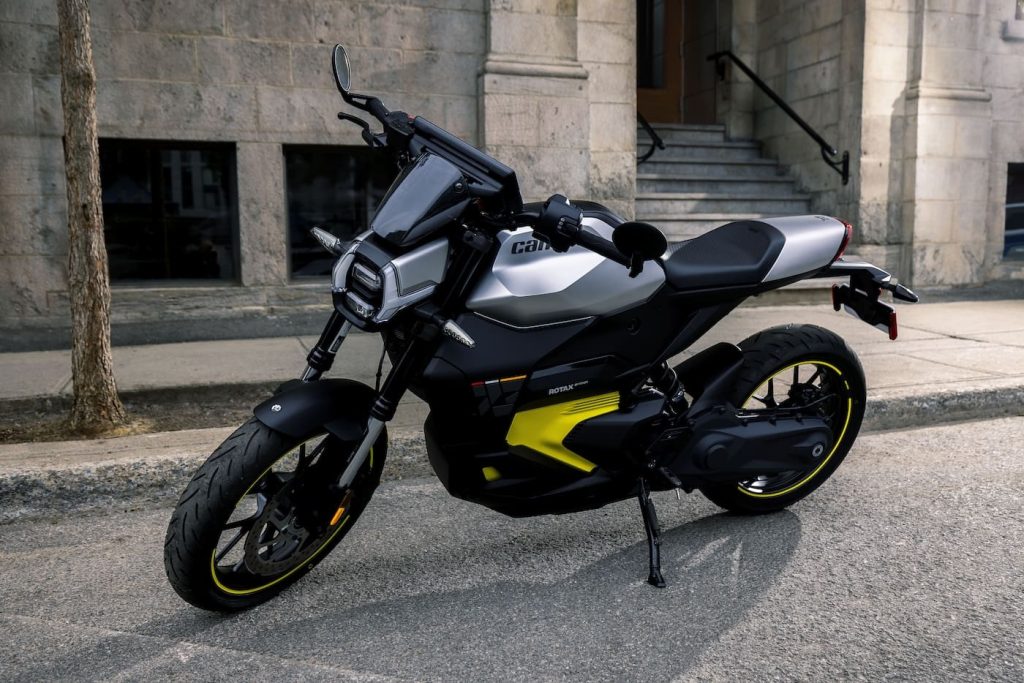
Legacy brands meet the electric age
All three companies—Can-Am, Kawasaki, and Royal Enfield—share a rich history and strong brand identities, though each has taken a unique path to earn its reputation. The three companies established a loyal following through innovation in the motorcycle space, but that doesn’t always translate well into the modern electric age.
Can-Am was well known for its adventure and off-road focus, with its riders frequently taking the top spot on the podium through out the 70s and 80s. Ironically, it was the Japanese brands that largely contributed to unseating Can-Am, as Kawasaki and the other major Japanese motorcycle companies grew in favor in the coming decades. Can-Am winked out in the 80s, just as Kawasaki’s reputation as a powerhouse in sport and performance motorcycles was blooming.
Royal Enfield, with its iconic retro aesthetic and reputation for affordable, no-frills bikes, is now set to enter the electric space. With a rumored commuter model in the works, the company is likely aiming to combine its distinctive design with practical, urban commuting needs. But brand identity only gets you so far—consumers in the commuter electric segment want value, range, and performance, usually in that order.

Can-Am and Kawasaki’s struggles
Can-Am’s Pulse and Kawasaki’s electric Ninja and Z e-1 have faced criticism for not delivering the full package. At $14,000, the Pulse is seen as an expensive option with a limited range of just 100 miles (160 km) in the city from an 8.9 kWh battery pack, though that range drops quickly when traveling above slower city speeds. At that price, the bike makes it difficult for consumers to justify the cost when compared to other e-motorcycles with similar prices but higher performance.
Put simply, Can-Am is asking a price that pushes it out of reach for many commuters looking for a practical, daily-use bike.
Kawasaki’s approach is different, but it also has drawbacks. With its electric Ninja and Z e-1, Kawasaki offered a much more affordable entry into the commuter segment, starting at around $7,500. With the commuter electric motorcycle market skewed more heavily towards younger, urban riders, that pricing is much more realistic and attractive, especially to new riders who aren’t sure yet whether they want to commit.
However, the trade-off comes in the form of incredibly low power and limited range. The bikes feature a power rating of just 5 kW (6.7 hp) continuous and 9 kW (12 hp) peak. The advertised range of 41 mi (66 km) from a paltry 3 kWh battery drops further at faster speeds, though the bike can’t even go very fast, topping out at either 53 or 63 mph (85 or 101 km/h), depending on the ride mode. This combination of low power, limited range, and slow speed limit simply leaves many urban riders wanting more. And when there are other compelling electric motorcycles, such as the Ryvid Anthem, that can hit faster speeds and higher power levels for a thousand bucks less, the math just isn’t there for Kawasaki.
Though budget-friendly, Kawasaki’s models are viewed as underwhelming attempts to break into the market, falling short of expectations for performance in day-to-day commuting. The brand is built on a reputation for performance, but its first electric offering is largely a diminutive 125cc-equivalent that looks fast until you see it moving.
Again, these aren’t the only two companies that have found themselves in this quandary, but they’re two of the best examples for their failure to appeal on either end of the spectrum. By contrast, Harley-Davidson’s electric motorcycle brand LiveWire isn’t a financial success either yet, but has largely been met with praise for its combination of design and performance. The LiveWire Del Mar bike is priced at only slightly more than Can-Am’s entry-level model, yet offers twice the power, a larger battery, and significantly better performance (including a thrilling 0-60 mph time of 3.1 seconds). Thus, the bike actually delivers on performance while still meeting the needs of a commuter-type rider – even if its $15,499 price tag still keeps it out of the reach of most younger riders.
Royal Enfield’s opportunity
This leaves the question: can Royal Enfield strike the right balance? The Indian brand has an opportunity to fill the gap that both Can-Am and Kawasaki have left open—an affordable e-motorcycle with practical commuter performance. Royal Enfield is reportedly preparing to reveal a retro-styled electric motorcycle, a hallmark of the brand’s identity, but the critical factor will be how it pairs affordability with real-world commuter needs.
The brand has built its legacy on affordability and reliability, two things that are absolutely critical to commuter riders who depend on their bikes as workhorses, not playhorses.
If Royal Enfield can offer a model that provides adequate range and power at an accessible price point, it could become a strong contender in the commuter e-motorcycle market. Unlike Can-Am’s premium pricing or Kawasaki’s underpowered offering, Royal Enfield’s reputation for affordable yet reliable motorcycles could position it to succeed where others have stumbled.
A new era for commuting
While it’s too early to say if Royal Enfield’s electric motorcycle will hit the sweet spot, the market is watching closely. Can a company that has traditionally thrived on simple, gasoline-powered machines deliver an electric bike that meets the needs of modern commuters? As Can-Am and Kawasaki’s efforts have shown, it’s not enough to have a strong brand name. Success in the electric market depends on offering real-world performance that matches consumer expectations for practicality and cost.
Royal Enfield has a lot of potential in this space, but whether they can do what Can-Am and Kawasaki could not—create an electric commuter motorcycle that is affordable, well-performing, and desirable—remains to be seen.
